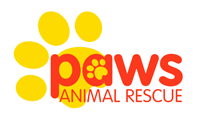Training basics to teach your dog – heel (1/2)
In order to help dog owners and their four legged family members build a better bond, a channel for communication, some doggy manners and help owners teach their dogs how to be well rounded, responsive to commands and become more manageable – we will be posting various training aids and techniques as part of our kennel diaries blogs. So be sure to keep checked in from time to time and read back over some other posts. We will include topics most dog owners struggle with the most! This week, we will talk about teaching your dog to “heel”.
Heel and loose lead walking are probably the most common issues dog owners will face. This is because it is one of the most easily taught habits that owners will inadvertently teach their dogs by allowing them to pull on the lead on walks when they are excited or hyped up. Owners tend to lean back and hold on thinking the dog will calm down after a while but when this becomes a daily norm, dogs start to form the habit that pulling on lead is what you do and gets you where you want to go. While heel is a must to teach your dog, it is more a command to teach your dog for safety reasons and general obedience like recall or “wait”. While loose lead walking is a behaviour to train into your dog. For this reason, we will be talking about both in two separate posts. To start off, teach your dog to “heel” on command.
Remember training sessions need to be introduced in short, positive, fun sessions two to three times a day 10 to 20 mins at a time. Always end on a positive note. If you feel your dog has been challenging during one session, end with a simple sit or something else they already know and lots of praise, to keep training sessions fun and easy to your dog. Your dog should always react positively to training sessions like they’re doing something fun rather than feel like they are a punishment. Results come with consistency and a happy dog.
To teach the “heel” command, start in the garden or a commonplace with very little distraction, firstly go without the lead. Keep an enticing treat to your side and every time your dog goes to be at your side to take the treat, reinforce the action with adding a cue to it, say “heel”. And follow with lots of praise and encouragement. Give him the treat every time he’s at your side and as soon as he’s near to your hand at your side. Don’t wait a few moments until he goes there. This is the stage of training where you are just teaching him the meaning of the command. Praise him using excitable, encouraging tones and the word “heel” over and over, stop treating him when he walks away or gets distracted. Repeat these steps. This may take one or two training sessions. You will then find you ask him to “heel” and he will automatically go to your side for the treat. Build up this training in the garden until you’re confident in his association with the command and start to introduce it on walks. Remember there is a difference between “heel” and “loose lead walking”. The difference with teaching him this in the garden is to refocus his attention on you and telling him that being by your side and carrying out a command for you is a really enriching and rewarding action. Always reinforce your dog to walk close to you by giving him a motivating reward, kibble to start off in the garden and then move onto more high value treats for a higher reward (high value – freeze dried liver, hotdog, cheese pieces) and lots of praise as you up the ante to places with higher distractions.
To aid this training, be sure to try tire him out and engage his brain ahead of any walking or training by giving him a stuffed kong or lickimat to use to try curb any excess energy and engage their mind so they are more focused on you or do a quick heel or sit training session in the garden.




